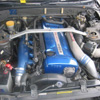Air Conditioning - Regassing
Announcements
-
Similar Content
-
Latest Posts
-
I love a good HCR32! Nice colour. Also those Bluebird hubcaps suit that Wagon R down to the ground
-
Also, technically not on the street but the UGX car park,
-
Don't do it if your gearbox box has already having syncro issues. The short hifter will put a greater load on them. If you must I remember Nismo did a shorter shifter, with the top part being physically shorter and the part that went into the gearbox was the same as stock. In saying that I've had a C's short shifter (I think) in mine for many years, which was given to me as the previous owner was not sympathetic to the gearbox. Thus forwarned I was careful and had to modify my normal changing style. You have to be super accurate with your clutch and shifts
-




Recommended Posts
Create an account or sign in to comment
You need to be a member in order to leave a comment
Create an account
Sign up for a new account in our community. It's easy!
Register a new accountSign in
Already have an account? Sign in here.
Sign In Now